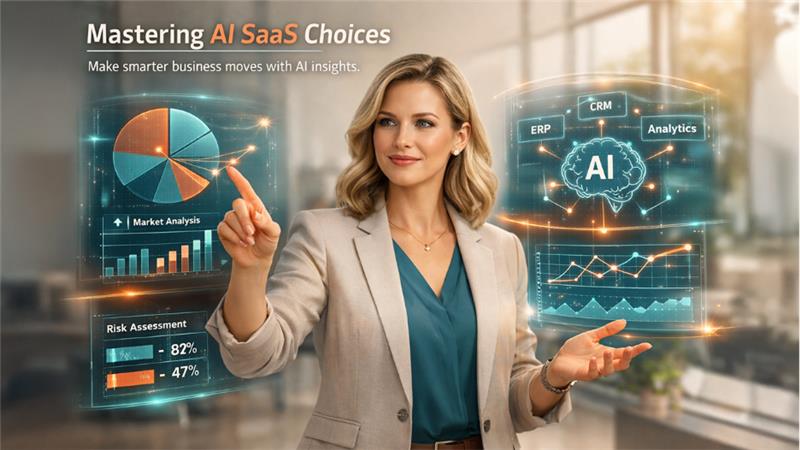Intro
Today, customer feedback is more than just an opinion or an expression of emotion and gratitude. For companies, it is a source of information about the people they serve.
By responding to customer feedback promptly, you can learn what you need to improve, what services or products your customers really need, or how to differentiate yourself in a challenging marketplace. For 86% of customer service executives surveyed, improving the customer experience is a top priority. What's more, you can gather feedback from your employees and any information about your CRM or LMS system to keep it running smoothly or to identify areas for improvement.
But how do you navigate through the overwhelming amount of feedback that is coming in from many sources? There is a solution. It's a feedback loop model delivered by an AI-based CRM or LMS for more comprehensive coverage.
Let's learn about the practical application of the data feedback loop in business and how this approach can benefit you.
What is a feedback loop?
Feedback loops are automated processes that are set up in a certain way. They collect information about how users interact with a particular product (online store, CRM, LMS, etc.), learn from that information, and provide you with ideas on how to improve the product. Customer reactions can also serve as valuable social proof, which is critical to building trust for years to come. It is called a loop because the process of collecting and processing data is continuous and never-ending. In other words, rest assured that changes in user needs and interests, or any system failures, will be detected and addressed as needed.
AI in CRM and LMS: Brief market overview
In 2024, organizations are implementing artificial intelligence in more business functions than ever before. Today, the AI adoption rate among enterprises has jumped from 50% to 72%.
At the same time, generative AI is being deployed where it adds more value. The most common use cases are marketing and sales, product and service development, and IT. Interestingly, 65% of respondents say their organizations regularly use generative AI in at least one business function, highlighting the growing demand for a Gen AI certification that equip professionals with the skills to harness its potential effectively.
We should realize that AI is now a must-have tool, not just a nice-to-have. When integrated with a modern CRM system or an intelligent learning platform, AI actually extends the basic capabilities of these software solutions, giving companies more room to improve internal processes and enhance the customer experience.
On the one hand, an AI LMS platform allows for more efficient training, which can reduce training budgets and result in more skilled employees. On the other hand, thanks to AI, we get a significant CRM enhancement, which contributes to the company’s growth as a whole. In both cases, the changes are driven by the user data feedback loop.
Below, we will take a closer look at how feedback loops integrated into enterprise systems work.
Feedback loops in CRM systems
With AI, you can do more than ever before because you can finally use CRM to grow your business, not just as a system to optimize internal operations.
The feedback loop model in a CRM system deals with the following customer data:
- Customer satisfaction indicators. This includes direct feedback, survey results, or ratings (where you are asked to give 1 to 5 stars).
- Behavioral data. This includes purchase history (frequency, amount, type of product), site interaction history (most visited pages), and other site interactions (contacting managers or technical support).
- Information about customers. This may include gender, age, location, marital status, or other information that customers have agreed to provide.
AI in CRM that enables feedback loops makes the way businesses interact with customers more meaningful and personalized. You can implement an intelligent assistant on your website and see how your customers react to it right away.
Or you can respond quickly to customer issues, offer profitable deals, and build a trusted relationship. Another benefit is predictive CRM analytics, which means exactly what it says: you can predict sales or customer response to a particular change in your service or offering - no more selling by feel, just continuous improvement based on data.
Feedback loops in an LMS
In-house training has long been the norm for progressive, knowledge-based organizations. But for employee training to be effective, this process cannot be left to chance. Instead, you should equip your LMS with artificial intelligence tools to collect and analyze feedback. As a business owner, you need to do this so you can listen to your employees and make adjustments as needed.
The AI feedback loop model processes the following user data:
- The number (percentage) of students who have completed a particular program, test, or module.
- How much time does a student spend studying?
- What are the most common difficulties students encounter (feedback on the LMS functionality and the learning material itself is taken into account)?
- Which students performed the best and worst?
An AI-powered LMS that relies on feedback loops to highlight problem areas can transform a one-size-fits-all curriculum into one that meets the needs and skill level of each student. Perhaps the most powerful benefit of a feedback loop in an LMS is that it shows you how to turn data into actionable insights for business growth.
The feedback loop in AI-based CRM and LMS: How does it contribute to continuous improvement?
So, how does CRM relate to continuous improvement? At the heart of the feedback loop is the idea of ensuring that the system (and thus the business) continues to improve. Let's see how it works:
- First, data is collected on user interaction with the system. No preliminary estimates are made at this stage.
- The next step is to analyze the preliminary data and identify certain patterns in customer behavior. For example, you may discover that your CRM users need plugins enabling seamless integration with social media or email.
- Based on the preliminary data, changes are made to the system to improve user satisfaction and business efficiency. For example, you may discover that your CRM users need plugins for seamless social media or email integration.
- Steps 1-3 are to be repeated continuously, ensuring automatic continuous improvement of the system.
The benefits of improving the LMS and CRM through a feedback loop are that
- Users are more satisfied;
- The risk of errors that can reduce revenue or damage reputation is lower;
- Your organization sees more revenue.
You can also extend the capabilities of enterprise systems with specialized plug-ins or additional, even free, AI tools. Keep this in mind.
Final words
Perhaps the most important thing about feedback loops is that your AI-powered CRM or LMS learns from data automatically. You don't have to spend time manually navigating databases and making changes to the system. The value of the feedback model is that it makes any system autonomous as it relies on the freshest and most relevant data, so don't worry - the most advanced analytics and predictive analytics methods are being applied.
Get ready for growth.



